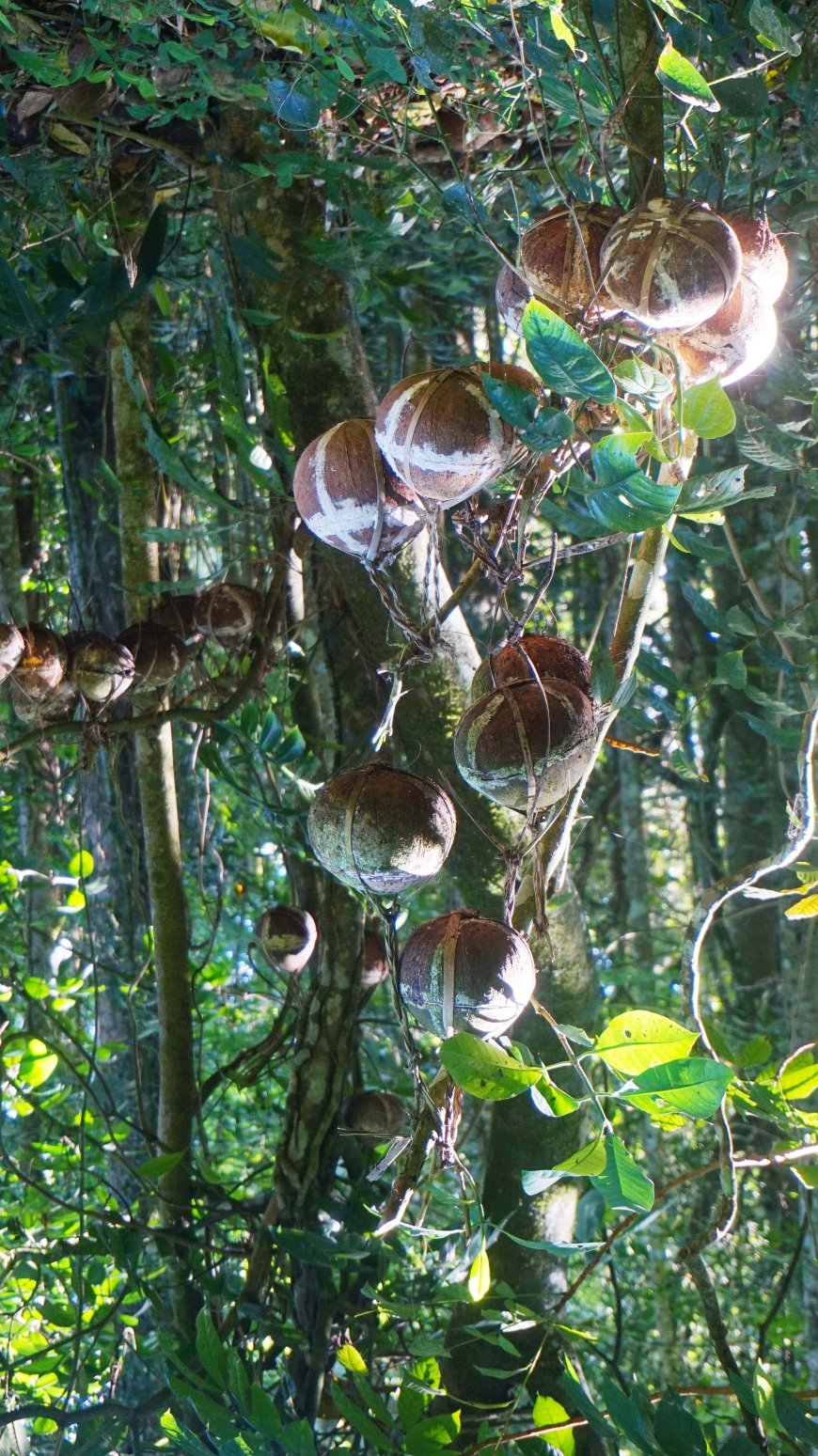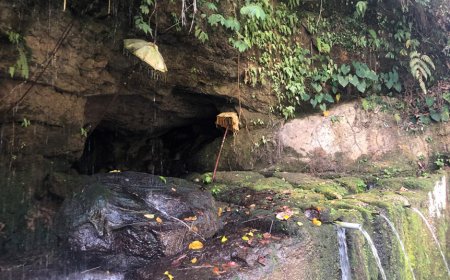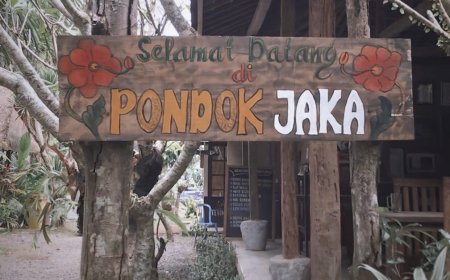Ari-Ari Grave : Local Wisdom of Bayung Gede Village
Hidden behind the hustle and bustle of its popularity, a village with a cultural richness beyond words and stunning natural charm, holds tightly to the authentic beauty of Bali that is rarely touched by the eyes of tourists. Please note, the placenta grave from Bayung Gede Village presents its own mystery and uniqueness.

Bayung Gede Village is located in Kintamani District, Bangli Regency, Bali. Bayung Gede, when viewed from an etymology perspective, has the meaning of "great strength." The word "bayung" comes from "bayu," which refers to power or strength, while "gede" means big. This is related to the origins of the formation of this village, where the villagers used great power to turn the dense forest into a settlement, even with only simple tools.
Bayung Gede Village has its own uniqueness, namely the placenta grave. The placenta grave is located in the south of the village and is surrounded by a circular road that can be passed by motorized vehicles. The area is around 60 acres. This cemetery is in the form of a small forest overgrown with various trees, especially humpback trees. is a place full of stories and legends in the culture of this village. Located in the middle of a lush forest, this cemetery is a silent witness from generation to generation. Each tomb here has its own story, related to the history and traditions of their ancestors.
This placenta grave is still very neatly guarded by local residents. They keep these graves clean and beautiful as a sign of respect for their ancestors. The placenta grave is also a place of prayer and special rituals inherited from the past. For visitors who dare to explore this mysterious forest, they will feel an aura of magic and tranquility that is difficult to find anywhere else. The placenta grave in Bayung Gede Village is a combination of natural beauty and cultural richness that invites us to reflect on and respect Bali's valuable ancestral heritage.
Before it was called setra ari-ari, in the past the place where the placenta was placed was called pengutangan kau. "Pengutangan kau" in the context of Bayung Gede Village may refer to certain practices or traditions related to funeral ceremonies or prayers in the village. Penutang can refer to an action or series of actions that must be carried out with full respect and in accordance with Balinese customs in the context of prayers or funerals. Practices like these are an important part of Bali's rich culture and beliefs and involve respect for ancestors and a deep connection with nature.
In Hindu belief, the placenta of a baby who is born at the same time as the baby is considered to be the baby's sibling. Therefore, the placenta should not be thrown away haphazardly, but must be buried in the appropriate manner and through a series of ceremonies (Putra, 1988). This also applies to the baby birth ceremony in Bayung Gede Village, where the placenta of the newborn baby is not placed in the yard of the house, but is transported to a location that has a special meaning called the placenta setra, which can be considered as a placental grave. . There, the baby's placenta is hung from a tree using a wrapper made from two pieces of coconut shell which are then put back together.

Ari-Ari Grave (Photo Source : Author Collection)
Historically, the Bayung Gede people are descendants of wooden tueds (tree bases) which were brought to life by the Tirta Kamandalu brought from Java by the incarnation of Bhatara Bayu. The Bayung Gede people believe that their origin is wood which received the blessing of Bhatara Bayu to transform into humans. Because their origin is from wood, when a new baby is born from its mother's womb it must be returned to its origin, namely to wood. In practice, this hanging system procession is symbolized by hanging the placenta of the baby or the baby's sibling on a bukak tree.
Balinese Hindu society generally buries the baby's placenta in the father's residence. However, the situation is different for the Bayung Gede community, who hang the placenta on a bukak tree (open wood) instead of in the ground, located in the placenta grave area downstream of the village.
One of the special aspects of the placenta grave is the presence of a bukak tree. The bungkak tree is thought to have the same function as the taru menyan tree in Trunyan Village, namely absorbing odors. That's why, even though in this grave there are many placentas hanging and they are old, there is no unpleasant smell at all.
The process of hanging a baby's placenta in Bayung Gede Village is often carried out at certain times, such as before dawn or only in the morning. This timing often has special significance in the traditions and beliefs of the local community in the village, which may be related to spiritual elements or traditional norms that they uphold in their culture. In Balinese culture, many ceremonies and practices are organized according to the Balinese ceremonial calendar (pawukon), which takes into account the days considered most suitable for carrying out certain ceremonies. Therefore, the time for hanging the baby's placenta in Bayung Gede Village may also follow the Balinese ceremonial calendar or traditional rules that have been passed down from generation to generation.
The equipment used in this ceremony is a container made from coconut shells that have been emptied of their water. At the top of the shell, there is writing using the Ongkara script (the sacred script of the Hindu religion). The shell containing the placenta is also filled with eggplant thorns, pepper, roses, turmeric, and other ingredients. Then, the shell is closed again. On the split side of the shell, it is given a pamor layer and tied with bamboo rope. This coconut container functions to protect the placenta from the effects of the sun, rain, animal attacks, and the like.
When in the grave, the family will look for a sturdy branch to hang the placenta. The father who was carrying the placenta tried to avoid talking to other people walking in the same direction as him on the street. Next, the placenta is tied to a branch of a bukak tree. The parents would then look for firewood if the placenta they brought was from a boy, and vegetables if the placenta belonged to a girl. Finally, they return home mentioning what they brought to the baby.
The burial of the placenta in Bayung Gede Village, Bali, reflects a deep symbolic meaning in local culture. This practice strengthens humans' connection to nature, signals protection and safety for newborn babies, and is a way to maintain culture and honor ancestors. In addition, burial of the placenta is part of the cultural heritage passed down from generation to generation, preserving rich cultural roots. Continuing this practice is a form of maintaining a unique cultural identity.
This is a form of respect for ancestors who have an important role in Balinese culture. The burial of the placenta also involves a religious ceremony with prayers and offerings to spiritual entities, asking for blessings, prosperity, and happiness for the newborn. So, the practice of burying the placenta in Bayung Gede Village is not only a physical act, but also has many layers of symbolic meaning related to life, nature, culture and spirituality. This practice is a meaningful way to celebrate birth and honor the natural process of human life.





























































